Euthanasia - Anrakushi
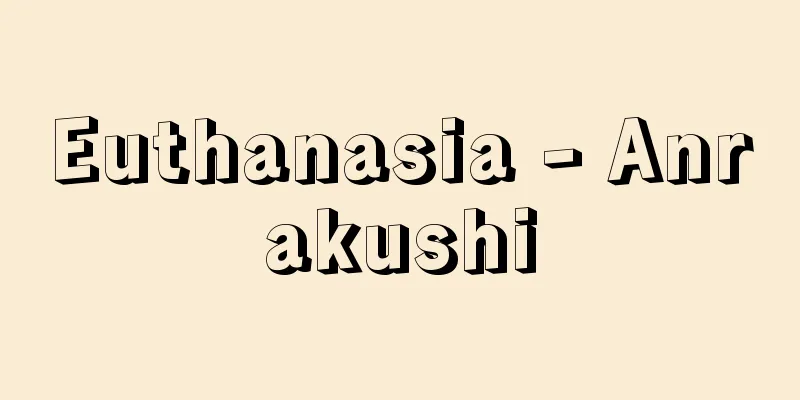
|
It is also called euthanasia (German). The origin of the word comes from the Greek word euthanasia (meaning "good death" or "easy death"). Euthanasia refers to the act of allowing an incurable sick or injured person who is near death to die in order to relieve them from the pain of death. There are two types of euthanasia: active euthanasia, in which the natural death of the sick or injured person is hastened, and passive euthanasia, in which the natural death of the sick or injured person is not hastened. Of these, active euthanasia, which involves shortening a person's life, has often been discussed in various fields such as religion, philosophy, literature, medicine, and law. For example, in literary works, the theme of euthanasia is addressed in Thomas More's Utopia, R. Martin du Gard's Thibaults, D. H. Lawrence's Sons and Lovers, and in Japan, Mori Ogai's Takase-bune. [Tetsuro Nawa] Changes in the debate over euthanasiaHistorically, in Europe, the pros and cons of euthanasia, like the issue of suicide, are closely related to Christianity. In medieval Christian society, life is a gift from God, and the taking of another's life, whether suicide or euthanasia, is against God's will (this idea began with St. Augustine and was culminated by Thomas Aquinas), and euthanasia was punishable as a form of murder. In the Renaissance, the idea of respecting individual freedom emerged, and although Thomas More was a Catholic, he ironically stated in his 1516 work Utopia that in a utopia, i.e., a non-Christian society, euthanasia by the individual's own will (voluntary euthanasia) could be approved. Francis Bacon used the term euthanasia in his Noum Organum (1620) to develop a positive argument for euthanasia. Despite this range of arguments in favor of euthanasia, the idea that suicide and euthanasia are sinful remains dominant, and in countries where Christian ethics are deeply rooted, legislation that treats euthanasia as a form of murder and also severely punishes suicide has been widely seen. In contrast, in modern times, there were strong calls for the separation of law and religion. For example, C.B. Beccaria, who followed the trend of modern Enlightenment thought and is also known as the "founder of modern criminal law," strongly opposed punishing suicide in his Crimes and Punishments (1764), arguing that only God can judge suicide. With the rise of modern rationalism and humanitarianism as seen here, and also the development of modern medicine, at the end of the 18th century, the idea of approving active euthanasia to free people from the pain of death emerged. In the 20th century, the movement to legalize euthanasia spread, and in the 1930s, "Euthanasia Societies" were founded one after another in the UK and the US, and movements calling for the establishment of laws legalizing euthanasia became active. However, in Nazi Germany, millions of people who were deemed "enemies of the people" or "inferior people" (Jews, homosexuals, mentally disabled people, etc.) were massacred in the name of "euthanasia". After this bitter experience, after World War II, the idea of easily affirming euthanasia was forced to seriously reflect on itself, and even those who support euthanasia came to reject "forced euthanasia" that paved the way for the Nazi genocide, and to insist that euthanasia should be limited to cases where it is in accordance with the individual's wishes (voluntary euthanasia). As of 2014, euthanasia is permitted by national law in Switzerland (1942), the Netherlands (2001), Belgium (2002), and Luxembourg (2008), and all of these require the individual's voluntary wishes to be accepted. The Netherlands and Belgium also permit euthanasia of children if certain conditions are met. [Tetsuro Nawa] Euthanasia and criminal liabilityThe current Criminal Code, enacted in 1907 (Meiji 40), stipulates the crime of murder (Article 199) as well as the crimes of aiding suicide and of consensual murder (Article 202), distinguishing whether or not the crime is against the will of the victim (suicide is not punishable). Therefore, since compulsory euthanasia is against the will of the victim, there is no question that it can be considered as murder. In contrast, voluntary euthanasia is not against the will of the victim, so the question is whether it constitutes a crime under Article 202. In the past, there was a view that even voluntary euthanasia should be punished under Article 202 because it shortens a human life, but today it is understood that even if it falls under Article 202, if certain requirements are met, it is illegal or responsibility is eliminated, and it is not a crime. Incidentally, the Nagoya High Court ruling in 1962 was a leading case that showed the general requirements for euthanasia to be considered illegal. According to this ruling, for euthanasia to be considered illegal, six requirements must be met: (1) the patient must suffer an incurable disease and death must be imminent, (2) the pain must be so severe that no one can bear to witness it, (3) there must be a purpose to alleviate the agony of death, (4) if the patient is able to express his or her will, there must be a sincere request or consent from the patient, (5) the euthanasia must be performed by a doctor or there must be special circumstances that make it impossible for a doctor to perform the euthanasia, and (6) the method must be ethically acceptable (note that the court did not find the method illegal in this case). Since then, most rulings on euthanasia have been in cases where the perpetrator and victim were in a close relationship, but one case in which a doctor's actions were tried is the Yokohama District Court ruling in March 1995 on the Tokai University Euthanasia Case. In this ruling, the condition for euthanasia by a doctor is that "there is no other medical alternative to remove or alleviate pain," but in this case, the doctor was found guilty because neither physical pain nor the patient's expression of will were acknowledged. As such, there are no precedents in Japan where a person has been found not guilty of euthanasia. [Tetsuro Nawa] Euthanasia and medical careIn relation to the leading case, the Nagoya High Court ruling of 1962, the following points are particularly problematic in the medical field regarding euthanasia. (1) If it does not shorten the patient's life, it is lawful as a medical procedure. (2) Even if it affects the time of death, it would be lawful if the patient consents to it, even if life-prolonging measures are not taken to avoid prolonging the patient's agony (passive euthanasia) or if the use of painkillers results in shortening the patient's life as a side effect (indirect euthanasia). (3) As is said, "from euthanasia to death with dignity," with the development of pain clinics today, most death pains can be relieved by using painkillers such as morphine, and patients in a vegetative state do not experience physical pain, so death with dignity is more important than euthanasia in the medical field. (4) Because it must be based on the patient's own explicit will, there is a view that the patient's presumed consent is sufficient, but this is not valid. (5) Because there is a high risk of abuse of euthanasia, it should be performed by a doctor unless there are special circumstances. Therefore, non-physicians are required to request euthanasia from a physician, but in a case where a husband who was caring for his terminally ill wife stabbed her to death with a kitchen knife after the physician refused euthanasia despite repeated requests, the Osaka District Court ruled in 1977 that this did not constitute a special circumstance that could not have been regulated by a physician. (6) Since terminally ill patients generally experience various physical pains and mental anguish, even if they cannot be called the agony of death, it is urgent to popularize hospices and palliative care wards that provide warm nursing and lead such patients to a peaceful end at their request, and to establish a medical system to guarantee this. [Tetsuro Nawa] "Euthanasia" by Anan Seiichi (1977, Kobundo)" ▽ "The Logic and Ethics of Euthanasia" by Miyagawa Toshiyuki (1979, University of Tokyo Press)" ▽ "The Issue of Death with Dignity as Seen in the Documents" edited by Nakayama Kenichi and Ishihara Akira (1993, Nippon Hyoronsha)" ▽ "Euthanasia - Looking at Life and Death" edited by NHK Human Body Project (1996, Japan Broadcasting Publishing Association)" ▽ "Euthanasia, Death with Dignity, and Terminal Care" edited by Machino Saku et al. (1997, Shinzansha)" ▽ "Euthanasia and Death with Dignity" by Nakayama Kenichi (2000, Seibundo)" ▽ "The Right to Self-Determination and the Right to Die, New Edition" by Tateyama Tatsuhiko (2002, Tokai University Press)" ▽ "A Countries Where Euthanasia is Possible" by Mitsui Mina (Shincho Shinsho) [References] | | | | | | -bune| | | | | | | | | | | | |Source: Shogakukan Encyclopedia Nipponica About Encyclopedia Nipponica Information | Legend |
|
安死術またはオイタナジーEuthanasie(ドイツ語)ともいう。この語源はギリシア語のエウタナーシャeuthanasia(「良き死」または「楽な死」の意)にある。安楽死とは、死期の切迫した不治の傷病者を死苦から解放するために死なせることをいう。安楽死には、傷病者の自然の死期を早める場合(積極的安楽死)と、これを早めない場合(消極的安楽死)とがあり、このうち人の生命の短縮を伴う積極的安楽死については、宗教、哲学、文学、医学、法学などさまざまな分野でしばしば論じられてきた。たとえば文学作品では、トマス・モアの『ユートピア』、R・マルタン・デュ・ガールの『チボー家の人々』、D・H・ローレンスの『息子と恋人』をはじめ、日本でも森鴎外(おうがい)の『高瀬舟』が安楽死のテーマを扱っている。 [名和鐵郎] 安楽死是非論の変遷歴史的にみると、ヨーロッパでは、安楽死の是非は自殺の問題と同様に、キリスト教との密接なかかわりをもっている。中世キリスト教社会では、生命は神のたまものであり、自殺であれ、安楽死であれ、人間が人の生命を奪うことは神の意思に反するという考え方(これは聖アウグスティヌスに始まり、トマス・アクィナスにより集大成された)を前提として、安楽死も殺人の一種として処罰の対象とされた。ルネサンス時代になると、個人の自由を尊重する思想がおこり、前記トマス・モアはカトリック教徒ではあるが、1516年の『ユートピア』において、ユートピア、すなわち非キリスト教社会では、本人の意思による安楽死(任意的安楽死)も是認されうることをアイロニックに述べている。フランシス・ベーコンは『ノウム・オルガヌム』(1620)において、ユーサナジアeuthanasiaということばを用いて安楽死肯定論を展開している。このような一連の安楽死肯定論にもかかわらず、やはり自殺や安楽死を罪悪視する考え方が支配しており、とくにキリスト教的倫理観の根強い国々では、安楽死を殺人の一種とするとともに、自殺をも厳しく処罰する立法が広くみられた。 これに対して、近代になると、法と宗教の分離が強く叫ばれ、たとえば近代啓蒙(けいもう)思想の流れをくみ、「近代刑法学の始祖」とも称されているC・B・ベッカリーアは『犯罪と刑罰』(1764)のなかで、自殺は神のみが裁きうるとして、自殺を処罰することに強く反対した。ここにみられるような近代的合理主義と人道主義の台頭のもとに、また近代医学の発達が契機となって、18世紀末には死苦から解放するための積極的安楽死を是認しようとする考え方がおこってきた。20世紀に入ると、安楽死合法化を求める動きが広がり、1930年代には、イギリスやアメリカで「安楽死協会」が相次いで発足し、安楽死合法化法の制定を要求する運動が活発に展開されるに至った。ところが、ナチス・ドイツにおいて、「国民の敵」「劣等者」とされた数百万にのぼる人々(ユダヤ人、同性愛者、精神障害者など)が「安楽死」の名のもとに虐殺されるという不幸な事態が発生した。このような苦い経験を経て、第二次世界大戦後は、安楽死を安易に肯定しようとする考え方は深刻な反省を迫られ、安楽死肯定論者も、ナチスによる大量虐殺に道を開いた「強制的安楽死」を否認し、安楽死も本人の意思に合致する場合(任意的安楽死)だけに限定すべきことを主張することとなった。2014年時点で、国家の法律で安楽死を認めているのはスイス(1942年)、オランダ(2001年)、ベルギー(2002年)、ルクセンブルク(2008年)で、いずれも本人の自発的な意思が容認条件にあげられている。なお、オランダとベルギーでは一定の要件を満たしたうえでの子供の安楽死も認めている。 [名和鐵郎] 安楽死と刑事責任1907年(明治40)に制定された現行刑法は、殺人の罪について、被害者の意思に反するか否かを区別して、殺人罪(199条)のほか自殺関与及び同意殺人罪(202条)を規定している(なお、自殺は不可罰)。したがって、強制的安楽死は被害者の意思に反する場合であるから、殺人罪に該当しうることは疑問の余地がない。これに対して、任意的安楽死は被害者の意思に反しない場合であるから、202条の罪が成立するか否かが問題となる。かつては任意的安楽死であっても人命を短縮する以上202条として処罰すべきであるとする見解があったが、今日では、202条には該当するが一定の要件をみたせば違法または責任が阻却され、犯罪とはならないと解されている。 ところで、安楽死として違法阻却となるための一般的要件を示したリーディング・ケースとして、1962年(昭和37)の名古屋高裁判決がある。これによれば、安楽死として違法阻却となるためには、(1)不治の病であり、死が目前に迫っていること、(2)苦痛が甚だしく、何人(なんぴと)も見るに忍びないこと、(3)死苦緩和の目的があること、(4)意思表明ができる場合には、患者からの真摯(しんし)な嘱託または承諾があること、(5)医師の手によるか、医師によりえない特別の事情があること、(6)方法が倫理的に容認しうることの6要件をみたす必要がある(なお、本件には違法阻却が認められなかった)。これ以降の安楽死に関する判決は、行為者と被害者が近親関係にある場合がほとんどであるが、医師の行為が裁かれたケースとしていわゆる東海大学安楽死事件に関する1995年(平成7)3月の横浜地裁判決がある。この判決では、医師による安楽死の要件として「苦痛の除去・緩和のためほかに医療上の代替手段がない」ことを要求するが、本件については肉体的苦痛および患者の意思表示がいずれも認められないとして有罪とした。このように日本の判例には、安楽死として無罪としたケースは存在しない。 [名和鐵郎] 安楽死と医療リーディング・ケースである1962年の名古屋高裁判決に関連して、安楽死について医療現場では次のような点がとくに問題となる。(1)生命の短縮を伴わなければ、医療行為として適法である。(2)死期に影響するとしても、患者の死苦を長引かせないため延命措置をとらない場合(消極的安楽死)や鎮痛剤などの使用による副作用として結果的に生命が短縮される場合(間接的安楽死)でも、患者の承諾があれば適法となろう。(3)「安楽死から尊厳死へ」といわれるように、今日におけるペイン・クリニックの発達によって、モルヒネなどの鎮痛剤を使用すればほとんどの死苦が解消されうるし、植物状態の患者は肉体的苦痛は存在しないから、医療現場では安楽死より尊厳死がより重要である。(4)患者自身の明示的な意思に基づくことを要するから、患者の推定的承諾で足りるとする見解もあるが妥当ではない。(5)安楽死は濫用の危険が大きいから、特別の事情がないかぎり医師の手によるべきである。したがって、医師以外の者は医師に依頼して安楽死をしてもらうことが要求されるが、再三の懇願にもかかわらず医師が安楽死を拒否したため、看護をしていた夫が末期癌(がん)の妻を包丁で刺殺したという事案について、1977年の大阪地裁判決は、医師によりえない特別の事情には当たらないとした。(6)末期患者には、死苦とはいえないとしても、さまざまな肉体的苦痛や精神的苦悩を伴うのが一般的であるから、このような末期患者の希望によって、温かく看護し、安らかな臨終に導くためのホスピスや緩和ケア病棟を普及するとともに、これを保障するための医療制度を確立することが急務であろう。 [名和鐵郎] 『阿南成一著『安楽死』(1977・弘文堂)』▽『宮川俊行著『安楽死の論理と倫理』(1979・東京大学出版会)』▽『中山研一・石原明編著『資料に見る尊厳死問題』(1993・日本評論社)』▽『NHK人体プロジェクト編著『安楽死――生と死をみつめる』(1996・日本放送出版協会)』▽『町野朔他編著『安楽死・尊厳死・末期医療』(1997・信山社)』▽『中山研一著『安楽死と尊厳死』(2000・成文堂)』▽『立山龍彦著『自己決定権と死ぬ権利 新版』(2002・東海大学出版会)』▽『三井美奈著『安楽死のできる国』(新潮新書)』 [参照項目] | | | | | | | | | | | | | | | | | | |出典 小学館 日本大百科全書(ニッポニカ)日本大百科全書(ニッポニカ)について 情報 | 凡例 |
Recommend
Chennai
...Population: 3.841 million (1991), metropolitan...
The empty bowl hermit - Karahachi Sennin
...He is a legendary figure who is said to have b...
arachnoid granulation
…These cisterns are called subarachnoid cisterns,...
Penthouse (English spelling)
A penthouse is a rooftop floor. It can also mean a...
Rhynchospora brownii (English name) Rhynchospora brownii
…[Tetsuo Koyama]. … *Some of the terminology that...
Inatomi Sukenao - Inatomi Sukenao
Year of death: February 6, 1611 (March 20, 1611) Y...
Saint-Pierre (English spelling) Charles Irénée Castel, abbé de Saint-Pierre
1658‐1743 French clergyman and author. Elected mem...
Atomic bomb survivors
A person who has suffered physical damage as a res...
James, H. (Father) (English spelling) James H
…American psychologist and philosopher. He is kno...
Rock sedge - Rock sedge
...The sedges that grow in the high moors include...
Saint-Pierre Island (English spelling)
A small French island located south of Newfoundlan...
Virtual Machine
...A system that consists of a high-speed main me...
Yachiyo [town] - Yachiyo
A former town in Takada County, central Hiroshima ...
Computer Crime - Computer Hanzai
Computer crime : A crime related to computers. The...
False advertising - fishing
… In general, advertising refers to promotional a...
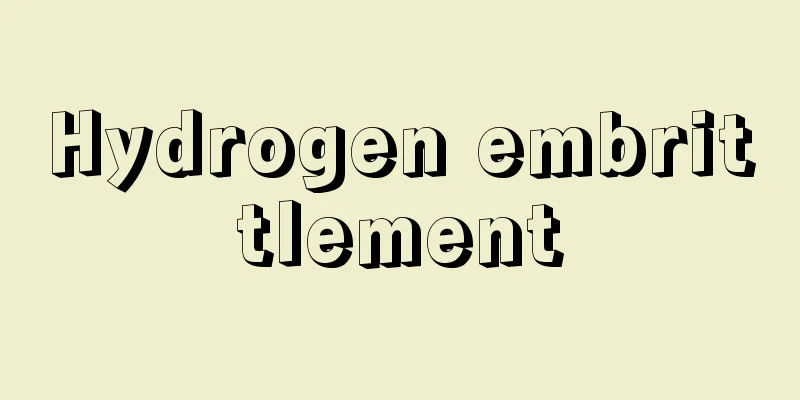
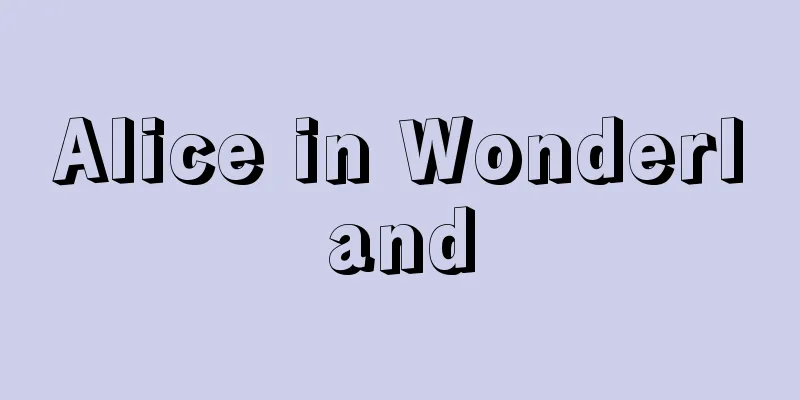
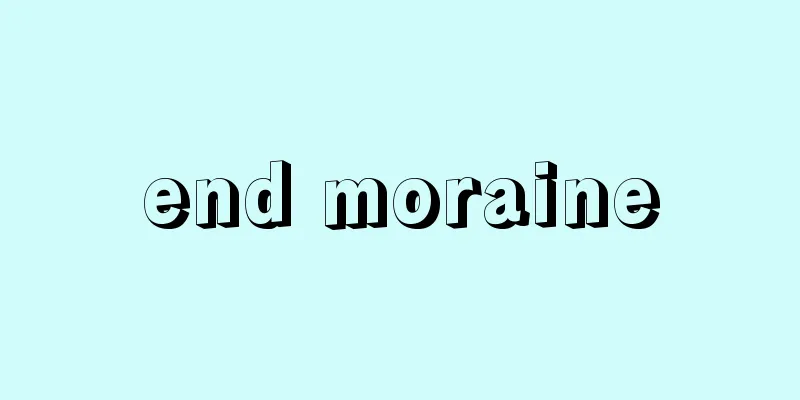
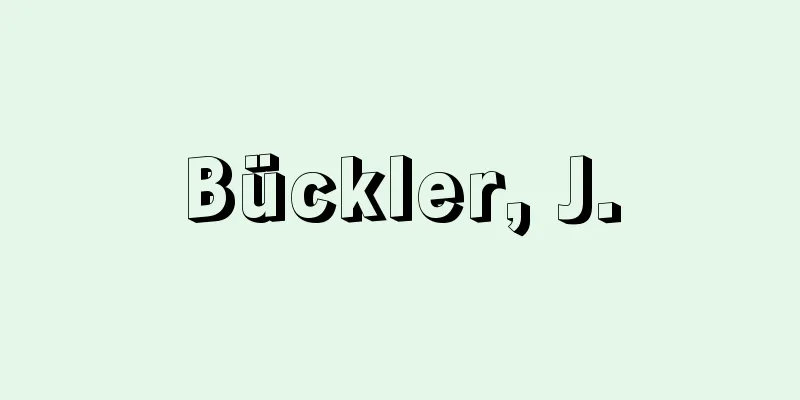

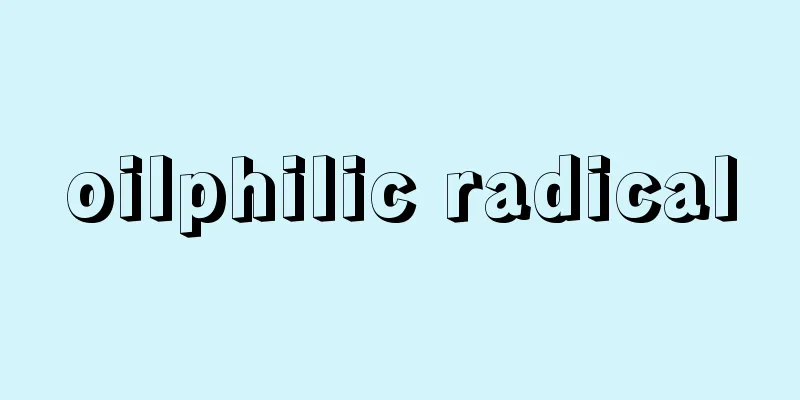


![Yuya [town] - Yuya](/upload/images/67cd1559d9f6d.webp)
